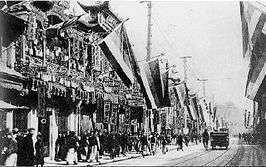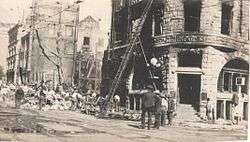“The surviving crew were detained overnight and forced to sign a pledge under the ‘Official Secrets Act’, promising to keep secret forever, the actual events of the night of 14th / 15th April, 1912″
Interestingly, a book was written 14 years previous to the sinking of the Titanic about a ship called the Titan sinking on its maiden voyage.
The biggest ship of its kind, the Titanic was billed ‘unsinkable’ by its owners White Star Line. But on April 15, 1912, it hit an iceberg and sank in the icy waters of the North Atlantic, with the loss of 1,517 lives However, according to several researchers the ship that sank was not Titanic at all – it was Olympic, her sister ship, in what was planned as one of the world’s greatest insurance frauds. In hindsight, it does seem strange that the Olympic, the first of the ‘sisters’ to enter service, was never given the publicity her younger sister, the Titanic, enjoyed the following year Why would that be?
The Olympic was launched a year before the Titanic but seemed to be the one with its more famous sister ship’s alleged poor luck. Within months of its launch in 1911, it had had two serious collisions, the second with Royal Navy cruiser HMS Hawke off the coast of the Isle of Wight causing serious structural damage to the Olympic’s keel and steel beams. A Royal Navy inquiry into the accident found the Olympic at fault for the collision and this meant that the owner, White Star Line’s insurance was null and void. The White Star Line was out of pocket to the tune of at least £800,000 (around $90-100m today) for repairs and lost revenues. Some authors have suggested that the damage to the Olympic was more serious than admitted. It is believed that the keel of the ship was actually twisted and therefore beyond repair, which would have effectively meant the scrapyard. The White Star Line would have been bankrupted, given its precarious financial situation.
According to Robin Gardner,
“Almost two months after the Hawke/Olympic collision, the reconverted Titanic, now superficially identical to her sister except for the C deck portholes, quietly left Belfast for Southampton to begin a very successful 25-year career as the Olympic. Back in the builders’ yard, work progressed steadily on transforming the battered hulk of the Olympic into the Titanic. The decision to dispose of the damaged vessel would already have been taken. … Instead of replacing the damaged section of keel, longitudinal bulkheads were installed to brace it”.
Although not a new theory, Robin Gardiner popularized the insurance swap theory in his 1998 book ‘Titanic – The Ship That Never Sank?’ He says:
“The evidence is overwhelming; eyewitnesses themselves describe running along Titanic’s decks, but where they said there were promenades, there should have been cabins. And while survivors on B Deck described seeing lifeboats being lowered from above, there’s no way they would have seen that on Titanic – only on the ship Olympic. You only have to look at the ships’ specifications to see the ‘Titanic’ passengers were actually aboard Olympic.”
According to Mr Gardiner, the ‘real’ story starts with financier J P Morgan’s takeover of White Star and the Royal Navy’s investment in the company’s new liners as potential troop carriers. He said:
“Following the Agadir crisis in 1911, Morgan began to ship gold and other treasures back to the safe haven of the US. There was also pressure on White Star to make up the cost of the damage to Olympic, which had been damaged in a collision with HMS Hawke, but which the insurance company would not cover. Swapping the identities of Olympic and Titanic was also the opportunity for Morgan, with the collusion of the British government, to quietly ship £8m of gold to the US. But unbeknown to the government, the gold was spirited away. To the present day, the most common maritime insurance fraud involves changing identities of ships.”
“But tragically the planned staging of the sinking of Titanic, whereby other ships from the company would be on hand to rescue all the passengers and crew, went disastrously wrong and more than 1,500 souls perished.
 The Captain of Titanic, Edward Smith (left) had been traversing the North Atlantic waters for more than a quarter of a century. He was regarded as the ‘world’s most experienced master’ in the North Atlantic but Smith knew all along that his ship would be made to sink on its ‘first’ voyage. He also had complete knowledge of where the icebergs were. Under his boss J.P. Morgan’s secret orders, he propelled Titanic full speed at 22 knots on a moonless night and through a ice field 80 square miles in size.
The Captain of Titanic, Edward Smith (left) had been traversing the North Atlantic waters for more than a quarter of a century. He was regarded as the ‘world’s most experienced master’ in the North Atlantic but Smith knew all along that his ship would be made to sink on its ‘first’ voyage. He also had complete knowledge of where the icebergs were. Under his boss J.P. Morgan’s secret orders, he propelled Titanic full speed at 22 knots on a moonless night and through a ice field 80 square miles in size.
Captain Smith’s actions were totally out of character. Significantly and conveniently, Smith in the age-old tradition, as Captain, went down with the ship. Could Smith have even been ‘allowed’ to survive, knowing as he did, the real truth about the incident? As is well known, there were not enough lifeboats for all passengers and crew. Some boats left the ship as little as only one quarter full. The Captain strangely ordered white flares knowing full well that the international standard for distress flares was red. Other ships passing within sight of these flares were intentionally confused and thought the Titanic was having a fireworks party.
In his book, “Titanic, the Ship that Didn’t Sink,” Robin Gardner states,
“As I delved deeper into the story, more and more inconsistencies became apparent. Inconsistencies that individually meant little but collectively pointed to a grimmer reality than that usually depicted in the heroic legend”. He continues, “Officers who were later acclaimed as heroes were exposed as anything but. One in particular removed a little boy from a lifeboat at gunpoint, before escaping in that same boat himself.
Descriptions of the collision and damage supposedly sustained by Titanic do not agree. The ‘slight scrape’ with the ice that was hardly noticed by most aboard contradicts solid evidence of structural damage at least 5½ feet (1.6 meters) within the outer hull of the vessel”. “Then came evidence to show that the ice the ship encountered was seen first not 500 yards (480 meters) ahead but more like 11 miles (17km). I began to wonder if perhaps the sinking of the Titanic might not have been an accident after all”.
Indeed, did Titanic actually strike an iceberg at all? We only have the testimony of four people believe it or not with which to confirm or deny this fact. First Officer Murdoch would have been the fifth witness but he did not live to tell his story. The Titanic was not the only ship at that precise location that night. For example, there is a photograph of a drifting lifeboat sporting the colors of a different ship than the Titanic. Then there is the gouge in the side of the ship itself – 1.6 meters deep through the outer steel plates and into the inner skin! Compacted ice is known to be very strong, but it is not capable of doing such damage to steel.
Both the American and British official inquiries were considered ‘whitewashes’, with much evidence ignored and eye-witness testimonies being twisted or indeed fabricated to fit the ‘official’ story. Of the 102 witnesses called to the British Inquiry, only two were passengers. None of the witnesses (crew or passengers) were allowed to offer first-hand evidence of any kind and were strictly restricted to the simple answering of questions without elaboration. By any standards at all, this sounds very much like a ‘whitewash’ to me.
A ‘yellow-funneled steamer’ observed in the proximity of Titanic by the officers and crew of the Californian at around the time of the incident. This ship has never been identified. Captain Lord of the Californian in an interview with an American newspaper reporter in 1914 said:
“…I saw another steamer approaching, and asked [the wireless operator] what vessels he had within reach; he replied: ‘The Titanic’, whereupon I replied, ‘That is not the Titanic; she is too small and hasn’t enough lights.’
Shortly afterwards this steamer stopped and was bearing S.S.E. about five or six miles from our position. …the chief officer was sweeping the southern horizon with his glasses, and finally reported he saw a four-mast steamer with a yellow funnel to the southward of us, and asked if we should try to get down to have a look at her.”
The crew of this ship (whatever she was) must have been aware that they were close to the Titanic, so why did no-one volunteer any information? Could this mysterious yellow-funneled vessel have been responsible for the devastating damage to Titanic? The ‘iceberg collision’ is just a cover story concocted to protect the guilty. Furthermore, upon arriving back in England, from New York aboard the steamer Lapland, two weeks after the disaster, 173 of the surviving crew denied their right to speak with their trade union representatives.
They were also detained and forced to sign a pledge under the ‘Official Secrets Act’, promising to keep secret forever, the actual events of the night of 14th / 15th April. Otherwise, they would be prosecuted and ‘never work again’, not just for White Star but for any other employer. In those now far-off days, the inability to procure gainful employment could be almost a death sentence to the crews and their families.
Did Captain Smith deliberately steer Titanic into a huge ice-field without reducing speed to create a cover-story for the Titanic to be rammed by the yellow-funneled mystery ship? Along with the officer on duty on the Bridge at that time, First Officer William Murdoch and Quartermaster Hitchens plus Quartermaster George Rowe on the after-bridge, lookouts Frederick Fleet and Reginald Lee were the only other ones known to have personally witnessed the appalling events. Of these five witnesses, four survived, significantly all of them ‘lower-class’ people. Forcing four working-class people to keep quiet over a century ago, would have been a relatively simple task.
First Officer Murdoch is said to have ‘committed suicide’ in the aftermath of the collision whilst the ship was being abandoned. He has also been accused of shooting passengers before turning a gun on himself, something that his family and descendants have disputed. Could there be a more sinister explanation for his demise along with that of Captain Smith? Down the years, suicide has always been a very convenient cover-story for many a silencing murder. How easy would it have been under the circumstances for a paid assassin to dispose of Messrs Smith, Murdoch, as well as the financiers Guggenheim, Strauss and Astor? Thus, these wealthy men, who may have opposed the formation of the Federal Reserve System (granted, due to their own conflicting financial interests and not out of any great concern for the plight of the masses), were disposed of, along with the ‘collateral damage’ of 1517 other innocents.
Evidences:
1. Portholes – Proponents of the swap theory have pointed out disparities in the number of portholes on the ships. The Olympic had 16 and the Titanic had 14. Photographs taken of the Titanic in dry dock show it with 14 portholes. But by the time of its doomed maiden voyage it now had 16, just like the Olympic. Was this evidence that the ships had been swapped or just that they had added two extra portholes as part of aesthetic changes to the Titanic?
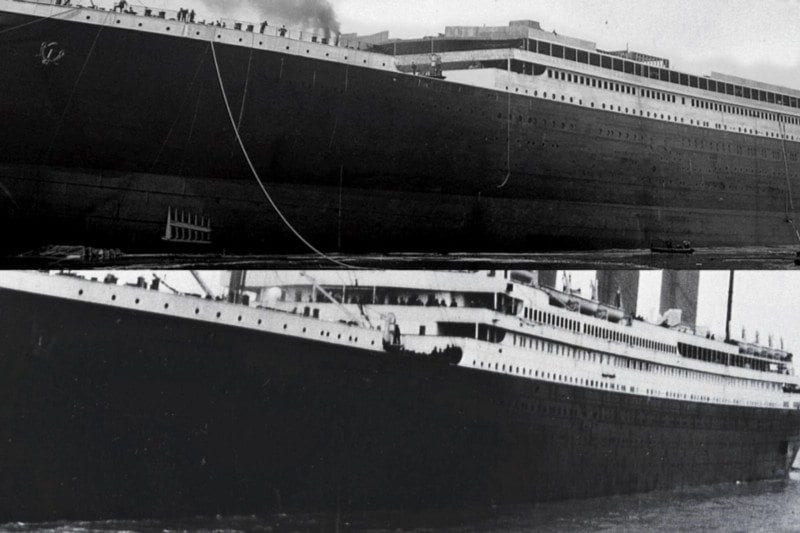
Other evidence supports the switch , the windows on the Olympic were somewhat unevenly spaced, but more evenly spaced on the Titanic. Again, by the time of its maiden voyage, the Titanic had acquired unevenly spaced windows like the Olympic.

2. List to Port – The damage to the Olympic after its collision with the Hawke lent it a noticeable and permanent 2˚ list to port. The undamaged Titanic had no such list. However, one second-class passenger who survived the sinking – Lawrence Beesley, later reported the Titanic did, in fact, list to port. Beesely, a science teacher, was a reliable observer who went onto to write one of the first books about the Titanic disaster.
3. Rumours amongst crew – There was a nationwide coal strike during the launch of the Titanic. This had led to thousands of firemen, boiler stokers and greasers short of work. Yet despite this the Titanic struggled to find crew, with many men refusing to work on the ship at any price. Rumors were circulating amongst the workers at Harland and Wolff that the ships had been swapped as part of an insurance scam, and Titanic was to be sunk. Did foreknowledge of the sinking of the Titanic frighten men off from wanting to work on the ship?
Despite the immense fanfare and hype that surrounded the Titanic launch, it was only just over half full when it left Southampton on its doomed voyage. Did White Star want to minimize the number of passengers because it intended to scuttle the ship? Or had the rumors of the insurance scam spread outside of the shipyards? Several last minute cancellations from high profile passengers certainly suggest some kind of foreknowledge.
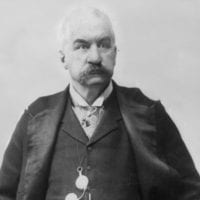 4. Last minute cancellations – Many of the richest and most prestigious names in early 20th-century society were booked onto the Titanic. JP Morgan – the international financier who owned the White Star’s parent company, was due to travel on the Titanic but cancelled his trip a few days before the departure, claiming illness.
4. Last minute cancellations – Many of the richest and most prestigious names in early 20th-century society were booked onto the Titanic. JP Morgan – the international financier who owned the White Star’s parent company, was due to travel on the Titanic but cancelled his trip a few days before the departure, claiming illness.
A New York Times reported discovered this to be a lie, Morgan was actually seen perfectly well with his mistress in France on the very day Titanic sunk. Industrialist Henry Clay Frick and his wife, banker Horace J. Harding and billionaire George Washington Vanderbilt – all connected to Morgan, were amongst several other prominent figures who cancelled at the last minute.
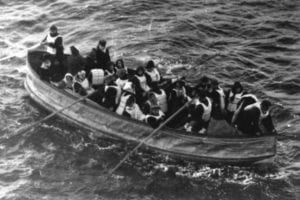
5. The SS Californian – The SS Californian, also owned by JP Morgan, was a large passenger ship that was ultimately blamed for the loss of life on the Titanic. It behaved somewhat oddly around the time of the Titanic’s voyage. Carrying no passengers, it steamed into the middle of the Atlantic, stopped and waited. It’s only cargo was 3000 woolen blankets and jumpers.
What was the purpose behind this curious maneuver? Was the Californian intended to rescue the Titanic’s passengers after its deliberate sinking? Edith Russell, a survivor of the sinking, was adamant that Titanic officers assured her the Californian was on its way. Author Robin Gardiner suggests serious navigation errors lead to the Californian stopping in the wrong area – some 12 miles away from the Titanic.
With the Californian unable to complete its rescue mission the Titanic was doomed, and some 1500 passengers and crew perished in one of the worst maritime disasters in modern history.
 6. The Wreck – The wreck of the Titanic was discovered by Robert Ballard in 1985. Some evidence from the wreck supports the switch theory. The stamp 401, the id number used for the Titanic at Harland and Wolff, can be seen on the Titanic’s propeller. However, some authors have suggested that the Titanic propeller was fitted to the Olympic during its repair following the collision with the Hawke. If true, this would be strong evidence that the vessel on the ocean floor was really the Olympic.
6. The Wreck – The wreck of the Titanic was discovered by Robert Ballard in 1985. Some evidence from the wreck supports the switch theory. The stamp 401, the id number used for the Titanic at Harland and Wolff, can be seen on the Titanic’s propeller. However, some authors have suggested that the Titanic propeller was fitted to the Olympic during its repair following the collision with the Hawke. If true, this would be strong evidence that the vessel on the ocean floor was really the Olympic.
When the wreck of the Titanic was first investigated by Robert Ballard and his crew after its discovery in 1987, the first explorations of the wreckage reportedly showed (completely undocumented in the ships original blueprints) iron support structures in place which appeared to be supporting and bracing the keel. This was never satisfactorily explained but would certainly be significant as it was reported by the puzzled Ballard himself who of course at that time knew nothing (and probably still does not even now) about the alleged switching of the two ships’ identities.
 What appear to be the letters M and P can also be seen on the side of the wreck. Could that be the remains of the ship’s original etched nameplate – ‘OLYMPIC’, covered over with the Titanic’s as part of the scam? The wreck appears to show some evidence of the grey paint used as an undercoat on the Olympic. The Titanic used black paint for its undercoat.
What appear to be the letters M and P can also be seen on the side of the wreck. Could that be the remains of the ship’s original etched nameplate – ‘OLYMPIC’, covered over with the Titanic’s as part of the scam? The wreck appears to show some evidence of the grey paint used as an undercoat on the Olympic. The Titanic used black paint for its undercoat.
7. Lack of media scrutiny – Insurance scams and maritime fraud were common at the time of the Titanic’s sinking. Whilst it seems unlikely such a scam could be pulled off today, the lack of media coverage in 1912 makes it more credible. Only one film survives of the Titanic and the photo record is also scant. With the two ships extremely similar, only the most eagle-eyed would ever have spotted the swap.
Asked how people react to his views on Titanic, Mr Gardiner said:
“I give regular talks and most people are fascinated, especially engineers who know how ships work. But this isn’t hidden information I am unearthing. You only have to read the inquiry notes – see how many people’s testimony was strangely ‘stopped’ and look at all the official paperwork – to see the ships were swapped.”
See THIS WEBSITE for more evidence supporting a switch including:
- Titanic‘s insurance was increased 5 days before sailing
- Damage from Olympic‘s collision with Hawke was more significant
- Olympic survived too long for a badly damaged ship
- Olympic had a 2 degree list to port, as did Titanic
- Only a limited number of changes required for a switch
- Difference in tonnage
- ‘The Olympic Room’
- If not insurance, a switch would keep the company operational
- Difference in Titanic‘s name plate
- Difference in number of Titanic‘s portholes
- Difference in Titanic‘s windows on B deck
- Difference in port side joint plating
- Discoloured plating on Titanic
- Olympic‘s wheelhouse was not curved
- Names riveted on, not welded
- Lack of publicity for Titanic
- Titanic‘s bulkheads were intentionally deficient
- Titanic‘s sea trials were shorter than Olympic‘s
- Titanic was not open for the press and public inspection
- J.P. Morgan and 50 others cancel passage
- Crewman refused to sail on Titanic
- Titanic‘s lifeboats had “RMS Olympic” written on them
- Titanic was at full steam but not achieving maximum speed
- Titanic did not strike an iceberg
- Ice on the deck was not from an iceberg
- Numerous ships were stationed nearby despite a coal strike
- Seacocks opened to hasten the sinking
- Californian was not expecting rockets, but a rendezvous
- Californian was carrying woolly jumpers and blankets
- Survivors on B Deck saw lifeboats lowered from above
- Passengers said there were promenades instead of cabins
- Linoleum flooring covered with carpets
- Titanic split at the same point where the Hawke hit.
- Surviving crew signed the Official Secrets Act
- Harold Sanderson repeatedly referred to Titanic as Olympic
- Titanic sailor’s deathbed confession of ‘switch’
- The number 401 on Olympic woodwork
- Olympic‘s name is on the wreck
- 401: Titanic‘s propellor is on Olympic
- White paint on the wreck
- Marble in the Sitting Room
- Ship’s Bell with no name on it
- Bulkhead put on Olympic found in stern wreck
Continued on next page…

